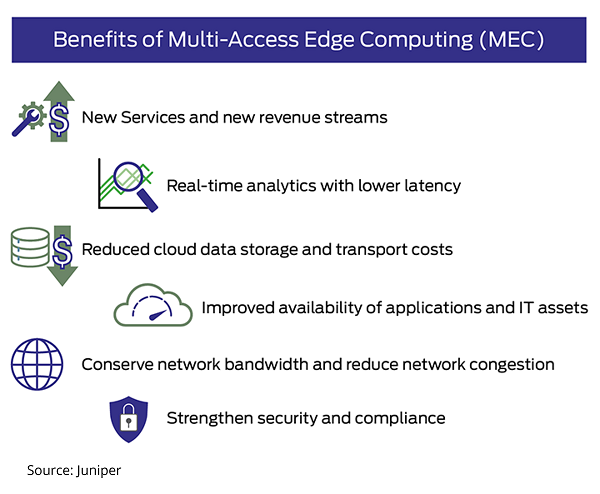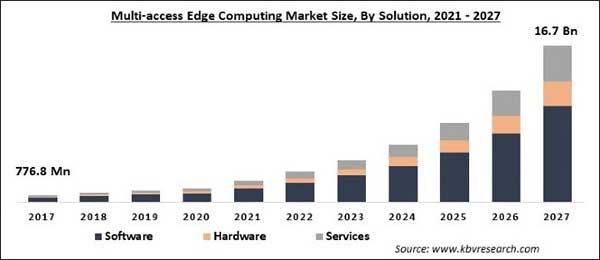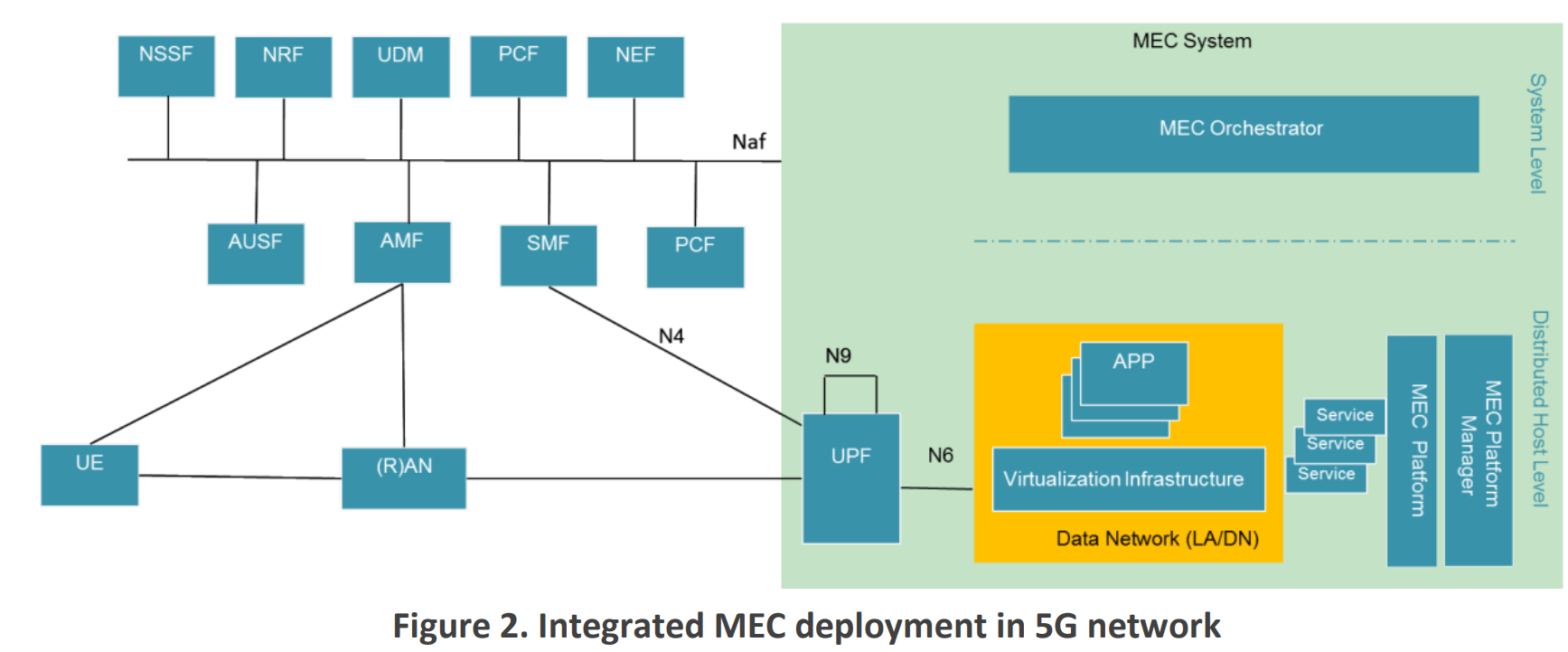Overview
The fifth generation of wireless technology, 5G, can provide higher speed & capacity and lower latency than the previous 4G LTE networks. It is one of the most robust technologies the world has ever seen.
In today’s hyperconnected world, the processors must move closer to the mobile edge network for data processing to take advantage of 5G’s speed and latency. This is where MEC comes into play.
What is Multi-Access Edge Computing (MEC)
Multi-access edge computing (MEC) is a network architecture that provides cloud computing capabilities and an IT service environment at the edge of the network. The network edge analyses, processes, and stores the data. Since the collected data is processed closer to the customer, the benefits of MEC include reduced latency, efficient network operations & service delivery to the end-user, and consequentially, improved customer experience.
‘Mobile edge computing’ refers to an earlier, more narrow definition of multi-access edge computing, and the terms are sometimes used interchangeably.
“It uniquely allows software applications to tap into local content and real-time information about local-access network conditions,” the European Telecommunications Standards Institute (ETSI) explains. MEC also enables applications and services to be hosted ‘on top’ of the mobile network elements. Multi-access Edge Computing will help boost new vertical business segments and services for consumers and enterprise customers. Some of the varied use cases that MEC can enable are:
- Video analytics
- Location services
- Internet-of-things (IoT)
- Augmented reality
- Optimized local content distribution and
- Data caching

MEC Global Market
According to KBV Research, The Global Multi-access Edge Computing Market size is expected to reach $16.7 billion by 2027, rising at a market growth of 39.1% CAGR during the forecast period 2021-2027. The need for faster decision-making & generation of vast amounts of data in industries such as IT and telecom, manufacturing, transportation, logistics, and data centers is encouraging the adoption of multi-access edge computing (MEC) technology.

MEC and 5G: A Powerful Combination
5G Core Network (5GC) is a game-changer for MEC. 3GPP Release 16 introduces several capabilities supporting mobile edge computing, including:
- User Plane Function (UPF) Reselection: The ability of an Application Function to influence UPF (re)selection and traffic routing directly via the Policy Control Function (PCF) or indirectly via the Network Exposure Function (NEF), depending on the operator’s policies.
- Local Routing and Traffic Steering: The 5G Core Network provides the means to select traffic to be routed to the applications in the local data network. A PDU Session may have multiple N6 interfaces toward the data network.
- Session and Service Continuity: The Session and Service Continuity (SSC) modes for different UE and application mobility scenarios
- Network Capability Exposure: Network Exposure Function (NEF) helps to expose capability information and services of the 5G CN Network Functions to external entities. Such entities could include Application Functions (AF) such as MEC system functional entities.
- QoS and Charging: The integrated deployment of MEC in a 5G system relies on the UPF as the PDU session anchor and gateway to data networks where the MEC environment is deployed. The Policy Control Function (PCF) can provide QoS and Charging rules for Protocol Data Unit (PDU) Sessions associated with MEC. This ensures that the MEC-related user plane traffic receives the correct QoS treatment and is billed appropriately.
- Local Area Data Network (LADN): Support of Local Area Data Network (LADN) by the 5G Core Network by providing support to connect to the LADN in a particular area where the applications are deployed.

The combination of edge computing & 5G provides a breakthrough into multiple innovative use cases for a plethora of industries. Because sensors can process data faster, AI and ML algorithms become more effective. Since 5G allows more connections to run simultaneously, near-real-time analytical intelligence can be leveraged to increase operational efficiencies. The 5G+MEC concept’s widespread adoption has been waiting for 5G network deployment. Once 5G networks are deployed with full force, partnership agreements between cloud and network owners will flourish along with the migration of applications from the cloud to MEC.

Operator’s Challenges in Deploying 5G and MEC nodes:
Today’s mobile operators widely adopt technology transformation within the existing processes and services. Be it transitioning from 4G to 5G, hardware to the cloud, IPv4 to IPv6 migration, etc. However, in today’s cutthroat competition within the industry, their business success depends on their ability to successfully navigate these transformations to provide a seamless subscriber experience and innovative services.
Some important considerations and challenges faced by mobile network operators as they begin to deploy 5G and MEC nodes:
- Achieving Low Latency Levels: MEC promises Low Latency levels for subscribers if deployed within the existing network architecture. However, deciding the networks ‘edge’ is challenging for the operators. The closer the distribution points to the subscriber, the lower the latency levels. Mission and time-critical services such as telemedicine and connected cars require the edge to be moved very close to the users.
- Functions at Multi-Access Edge Compute Nodes: One of the challenging decisions an operator makes is the number of nodes to deploy at the edge and what functions to assign to them. Should they be serving as hardware, containers or VMs?
- Space and Power Constraints: While one of the significant benefits of deploying edge is low latency, MEC generally brings a host of power and space constraints. For instance, in a 4G network, each node has 10-12 devices per node from different vendors. So, if an operator chooses to keep 1000 nodes, that will amount to about 10k devices or more. In addition, these nodes, if virtualized using MEC, will consume appropriate high power. MEC, thus, in general, is power-intensive.
- Security Challenges with 5G: The combination of MEC & 5G could propel businesses into many industries and use cases compared to what cloud computing or 5G can do alone. However, 5G MEC security has one particularly unique challenge to consider: According to TechTarget, “Edge computing is, in most ways, a kind of minimized data center, and minimization can often mean that protection features are stripped out or reduced to lower the cost of the edge facility.” Since the nodes and their data (may include critical credentials) are stored closer to end-users, MEC could make the network more vulnerable to hackers & attacks.
- High CAPEX and OPEX: 5G allows operators to provide capacity on-demand and scale up/down by aligning network investment with appropriate revenue opportunities. With the deployment of MEC at the edge, there is a fair CAPEX investment required per node to size and scale it. Subscribers demand a certain level of QoS, requiring each node to be serviced and maintained in real-time. Each node differs in traffic characteristics and volume.
- Automation and Engineering Intensive Set-Up: The deployment of MEC required thousands of nodes within the network to be engineered and automated. The exercise includes planning, configuration, deployment, launch, monitoring & maintenance of each node. Since the existing network uses manual processes, the automation set-up could be a challenge to begin with and an operationally heavy project.
Conclusion:
With its high speed, low latency, and massive capacity, 5G could make applications such as drone delivery and cloud-connected traffic control live up to their potential. From time-critical apps such as payments to emergency response use-cases such as telemedicine, the possibilities are virtually limitless. Furthermore, MEC-enabled 5G wireless systems promise to offer real-time, low-latency, and high-bandwidth access to the radio network resources. As a result, MEC would enable network operators to open up their networks to a wide range of innovative services & build a new ecosystem.

 Product Engineering Services Customized software development services for diverse domains
Product Engineering Services Customized software development services for diverse domains
 Sustenance Engineering Going beyond maintenance to prolong life of mature products
Sustenance Engineering Going beyond maintenance to prolong life of mature products
 Managed Services Achieve scalability, operational efficiency and business continuity
Managed Services Achieve scalability, operational efficiency and business continuity
 Technology Consulting & Architecture Leverage the extensive knowledge of our Domain Experts
Technology Consulting & Architecture Leverage the extensive knowledge of our Domain Experts





























